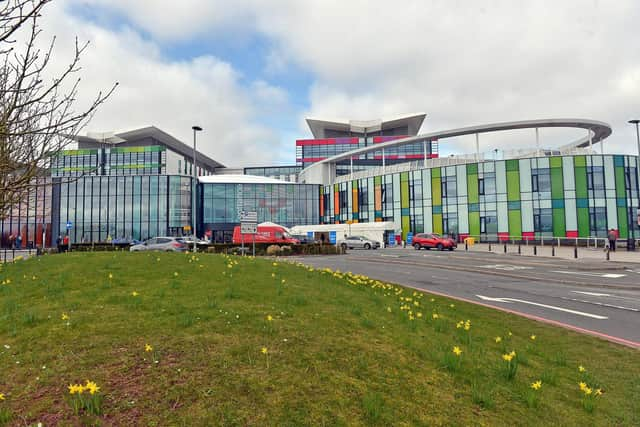Quarter of patients seeking most serious A&E care at King's Mill Hospital wait too long
and live on Freeview channel 276
The Nuffield Trust health think tank said delays to care are ‘uncomfortable at best and dangerous at worst’ and cautioned the coronavirus pandemic is not solely to blame for current pressures on accident and emergency services across the country.
NHS guidance states 95 per cent of patients attending casualty units should be admitted, transferred or discharged within four hours.
Advertisement
Hide AdAdvertisement
Hide AdBut Sherwood Forest Hospitals NHS Trust, which runs King's Mill in Sutton, fell behind that target in May, when just 75 per cent of the 10,186 attendances at its type one A&E department were seen within four hours, according to figures from NHS England.


Type one departments are those which provide major emergency services – with full resuscitation equipment and 24-hour consultant-led care, such as at King’s Mill – and account for the majority of attendances.
It means 25 per cent of patients seeking the most urgent care at SFH waited too long to be seen last month, compared with 26 per cent in April, and 10 per cent in May 2021.
Including the 5,478 attendances at other casualty departments, such as the urgent care centre at SFH’s Newark Hospital, 80 per cent of A&E patients were seen by the trust within the target time in May.
Advertisement
Hide AdAdvertisement
Hide AdThe King’s Fund think tank warned patients are waiting longer in A&E departments for a range of reasons, including rising attendances and emergency admissions, fewer hospital beds available and staffing strains.
The 95 per cent standard has not been met across the NHS in England since July 2015. Last month, just 73 per cent of A&E attendances were admitted transferred or discharged within four hours, compared with 84 per cent in May 2021 and 87 per cent in May 2019.
Performance
Performance was worse in type one departments, where just 60 per cent of patients were seen on time in May, down from 76 per cent during May 2021 and 79 per cent before the pandemic.
Jessica Morris, Nuffield Trust fellow, said: “Performance against the four-hour target deteriorated rapidly during the pandemic, but looking back further it is clear waiting times for patients in major emergency departments have been growing for the last decade.
Advertisement
Hide AdAdvertisement
Hide Ad“A decade ago, one in 20 people found themselves waiting longer than four hours to be either admitted, transferred, or discharged from major A&E, but the most recent figures show this has jumped to four in 10 people. These waits are uncomfortable for patients at best and dangerous at worst."
She saidt a lack of resources and staffing pressures are fuelling waiting times across the entire health service.
At SFH in May: there were 95 booked appointments, up from 75 in April; 643 patients waited longer than four hours for treatment following a decision to admit – 4 per cent of patients; and, of those, 96 were delayed by more than 12 hours.
Separate NHS Digital data reveals that in March the median time to treatment was 13 minutes – the median average is used to ensure figures are not skewed by particularly long or short waiting times. About 3 per cent of patients left before being treated.
SFH has been approached for comment.
